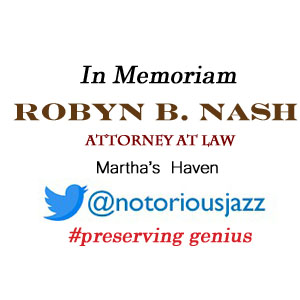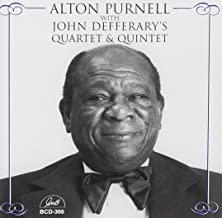
Daily Dose Of Jazz…
Alton Purnell was born in New Orleans, Louisiana on April 16, 1911. He sang before playing piano professionally, beginning to do so locally in New Orleans in 1928. He played in the 1930s with Isaiah Morgan, Alphonse Picou, Big Eye Louis Nelson, Sidney Desvigne, and Cousin Joe, and with Bunk Johnson in the middle of the 1940s.
Purnell joined George Lewis’s band after Johnson’s broke up in 1946, and remained there well into the 1950s, including for international tours. In 1957 Purnell relocated to Los Angeles. There he worked with Teddy Buckner, Young Men from New Orleans, Joe Darensbourg, Kid Ory, Barney Bigard, and Ben Pollack. He also recorded extensively as a leader, including for Warner Bros. Records, GHB, and Alligator Jazz. He toured internationally as a guest soloist from 1964.
He sang before playing piano professionally, beginning to do so locally in New Orleans in 1928. He played in the 1930s with Isaiah Morgan, Alphonse Picou, Big Eye Louis Nelson, Sidney Desvigne, and Cousin Joe, and with Bunk Johnson in the middle of the 1940s. Purnell joined George Lewis’s band after Johnson’s broke up in 1946, and remained there well into the 1950s, including for international tours.
Pianist Alton Purnell, who was a longtime Dixieland performer, passed away January 14, 1987 in Inglewood, California.
More Posts: bandleader,history,instrumental,jazz,music,piano
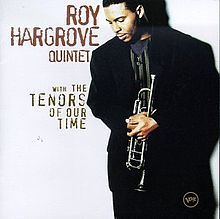
The Quarantined Jazz Voyager
Having completely adapted to a new modus operandi for living this glorious life, I remain vigilant in my social distancing and reminding myself of music I haven’t listened to in a long time. This week I’m pulling out the late great Roy Hargrove who had the vision to record With The Tenors of Our Time. It’s a 1994 release on the Polygram Record label that was recorded at Teatro Mancinelli and Giani Grascinelli Sound Service with executive producer Richard Seidel. The album’s art direction and design is by David Lau, photography by James Minchin, liner notes by Jimmy Katz.
>Others in the team contributing to the production of this album were Larry Clothier ~ production, engineering, mixing; Ed Rak ~ engineering, mastering, mixing; Robert Friedrich ~ assistant engineering; Troy Halderson ~ mastering; Camille Tominaro ~ production coordination; and Nelly Muganda ~ make-up and hair stylist.
Track Listing | 72:56- Soppin’ the Biscuit (composer Roy Hargrove, featuring Stanley Turrentine) ~ 7:59
- When We Were One (composer Johnny Griffin, featuring Johnny Griffin) ~ 5:59
- Valse Hot (composer Sonny Rollins, featuring Branford Marsalis, Ron Blake) ~ 6:57
- Once Forgotten (composer Pamela Watson, featuring Ron Blake on tenor and soprano saxophone) ~ 5:45
- Shade of Jade (composer Joe Henderson, featuring Joe Henderson) ~ 5:24
- Greens at the Chicken Shack (composer Cyrus Chestnut, featuring Johnny Griffin) ~ 5:45
- Never Let Me Go (composer Jay Livingston and Ray Evans, featuring Rodney Whitaker) ~ 5:36
- Serenity (composer Joe Henderson, featuring Joe Henderson) ~ 5:35
- Across the Pond (composer Roy Hargrove, featuring Joshua Redman) ~ 6:47
- Wild Is Love (composer Robert Mickens and G. Brown, featuring Stanley Turrentine) ~ 6:50
- Mental Phrasing (composer Roy Hargrove, featuring Ron Blake, Joshua Redman) ~ 6:25
- April’s Fool (composer Ron Blake) ~ 3:54
- Roy Hargrove – trumpet, flugelhorn (2,4,7,10), production
- Cyrus Chestnut – piano
- Rodney Whitaker – bass
- Gregory Hutchinson – drums
- Ron Blake – soprano, tenor saxophone
- Johnny Griffin – tenor saxophone
- Joe Henderson – tenor saxophone
- Branford Marsalis – tenor saxophone
- Joshua Redman – tenor saxophone
- Stanley Turrentine – tenor saxophone
More Posts: adventure,album,club,genius,jazz,museum,music,preserving,restaurant,saxophone,travel,trumpet
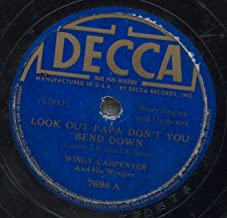
Daily Dose Of Jazz…
Theodore “Wingy” Carpenter was born on April 15, 1898 in St. Louis, Missour. Losing his left arm as the result of an accident during his early teens, the amputation was performed by a noted surgeon who was an uncle of jazz musician Doc Cheatham. Sometime later, he took up the trumpet and by 1920 he was working in traveling carnival shows. In 1921 he toured with Herbert’s Minstrel Band.
By 1926 he had settled in Cincinnati, Ohio, where he worked with Wes Helvey, Clarence Paige, Zack Whyte, and Speed Webb. In 1927, he played in Buffalo, New York, with Eugene Primus. Off and on from late 1926 through 1928, he was featured on the Whitman Sisters’ Show with pianist Troy Snapp’s band.
During the early 1930s, Wingy was featured with Smiling Boy Steward’s Celery City Serenaders and another Florida band led by Bill Lacey. In the mid-1930s, he began regular touring with bandleaders including Jack Ellis, Dick Bunch, and Jesse Stone. In the late 1930s, he settled in New York City, where he worked with Skeets Tolbert and Fitz Weston.
From 1939 on working as the leader of his own band, Carpenter had periods at well-known clubs such as The Black Cat, The New Capitol, Tony Pastor’s The Yeah Man, and other venues. He continued to lead his band through the 1960s, playing occasional dance dates. Several of his works are still accessible as MP3 downloads, including Look Out Papa Don’t You Bend Down, Preachin’ Trumpet Blues, Put Me Back in the Alley, Rhythm of The Dishes and Pans, and Team Up.
Trumpeter, vocalist and bandleader Wingy Carpenter, one of several one-armed trumpeters who worked in the music business, passed away on July 21, 1975, in New York City.
More Posts: bandleader,history,instrumental,jazz,music,trumpet,vocal
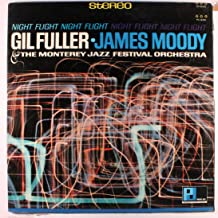
Daily Dose Of Jazz…
Gil Fuller was born Walter Gilbert on April 14, 1920 in Los Angeles, California. In the 1930s and 1940s, Fuller did extensive work writing and arranging for bandleaders such as Les Hite, Floyd Ray, Jimmie Lunceford, Billy Eckstine, and Tiny Bradshaw. He also worked with Benny Carter, Benny Goodman, Woody Herman, Count Basie, Machito, and Tito Puente.
Post World War II, he found himself increasingly in demand as a bebop arranger along with fellow modern arrangers Tadd Dameron, Gil Evans, and George Russell. Fuller’s work with Dizzy Gillespie was of particular note, yielding the tunes Manteca, Swedish Suite, Tin Tin Deo, and One Bass Hit. He is the composer of the jazz standard ballad I Waited For You, co-credited with Dizzy Gillespie.
Starting his own publishing company in 1957, he continued to work with some jazz musicians including Stan Kenton in 1955 and again during the 1960s. Gil also branched out into film music and pop with Ray Charles, among others. Arranger Gil Fuller passed away on May 26, 1994 in San Diego, California.
More Posts: arranger,history,instrumental,jazz,music
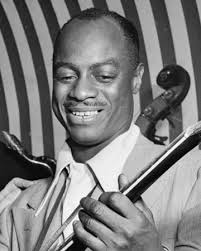
Three Wishes
When Tiny Grimes responded to Pannica’s inquiry, he only had a single wish:
- “I don’t need but one: security. Pay my rent, my automobile. The rest would take care of itself. Just give me a telephone, so I can get to my gigs.”
*Excerpt from Three Wishes: An Intimate Look at Jazz Greats ~ Compiled and Photographed by Pannonica de Koenigswarter
More Posts: baroness,guitar,history,instrumental,jazz,music,pannonica,three,wishes


